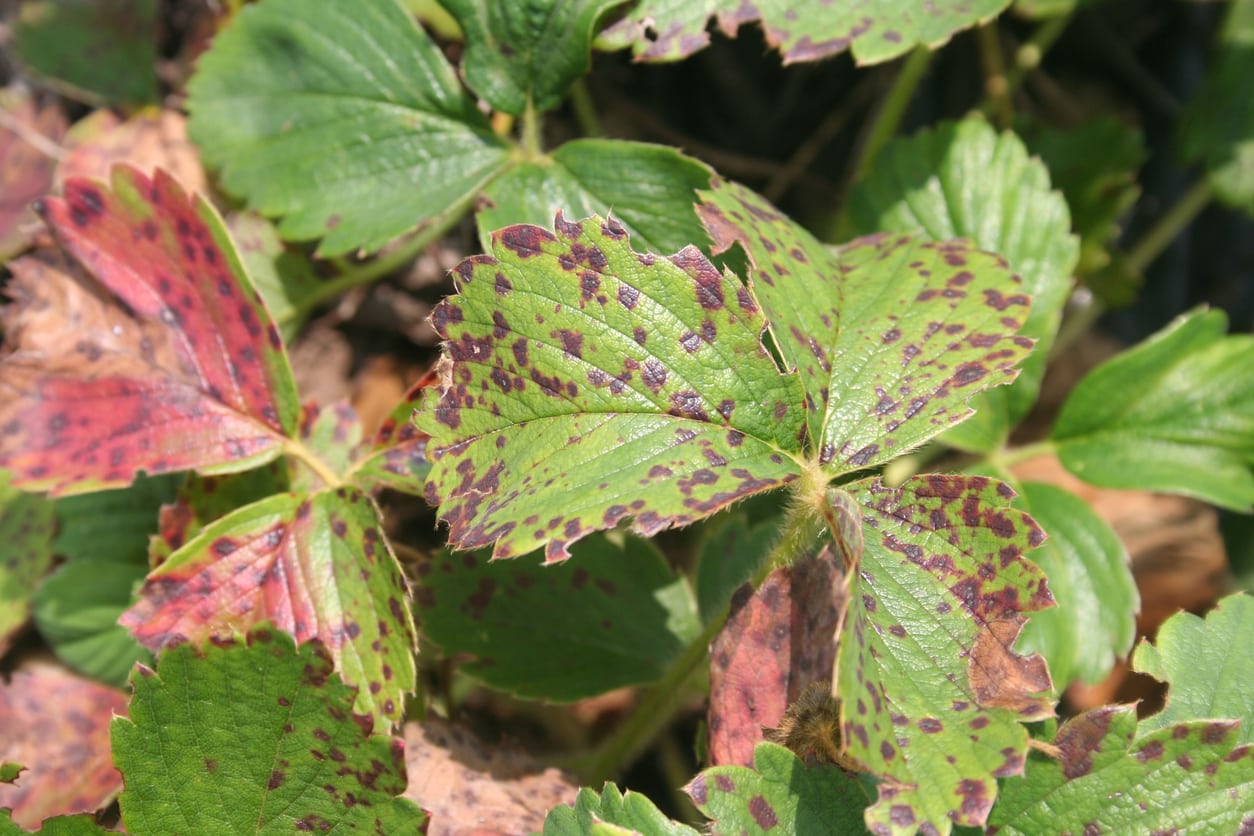Strawberries With Leaf Scorch – Treating Strawberry Leaf Scorch Symptoms


It is easy to see why strawberries are one of the most popular fruit crops grown in today’s home gardens. These simple to grow berries are not only versatile in the kitchen, but insanely delicious when compared to their supermarket counterparts. Their small, compact size also lends their growth to those tending container gardens, as well as larger plantings. By recognizing the signs and symptoms of common strawberry issues, like scorched strawberry leaves, growers are able to harvest succulent berries for year to come.
What is Leaf Scorch on Strawberry?
Scorched strawberry leaves are caused by a fungal infection which affects the foliage of strawberry plantings. The fungus responsible is called Diplocarpon earliana. Strawberries with leaf scorch may first show signs of issue with the development of small purplish blemishes that occur on the topside of leaves. Over time, the spots will continue to grow larger and darken. In severe cases, dark spots may even cover entire portions of strawberry plant leaves and cause them to completely dry and fall from the plant. Though the foliage of the infected plants is not aesthetically pleasing, it is seldom that the presence of this fungus impacts the quality of the strawberry crop itself.
Treating Strawberry Leaf Scorch
While leaf scorch on strawberry plants can be frustrating, there are some strategies which home gardeners may employ to help prevent its spread in the garden. The primary means of strawberry leaf scorch control should always be prevention. Since this fungal pathogen overwinters on the fallen leaves of infected plants, proper garden sanitation is key. This includes the removal of infected garden debris from the strawberry patch, as well as the frequent establishment of new strawberry transplants. The creation of new plantings and strawberry patches is key to maintaining a consistent strawberry harvest, as older plants are more likely to show signs of severe infection. When making new plantings always ensure that good planting practices are implemented. These practices include the use of proper plant spacing to provide adequate air circulation and the use of drip irrigation. The avoidance of waterlogged soil and frequent garden cleanup will help to reduce the likelihood of spread of this fungus.
Sign up for the Gardening Know How newsletter today and receive a free copy of our e-book "How to Grow Delicious Tomatoes".

Tonya Barnett has been gardening for 13 years. Flowers are her passion. She has transformed her backyard into a cut flower garden, which she regularly chronicles on her YouTube channel http://www.youtube.com/@tonyawiththeflowers.